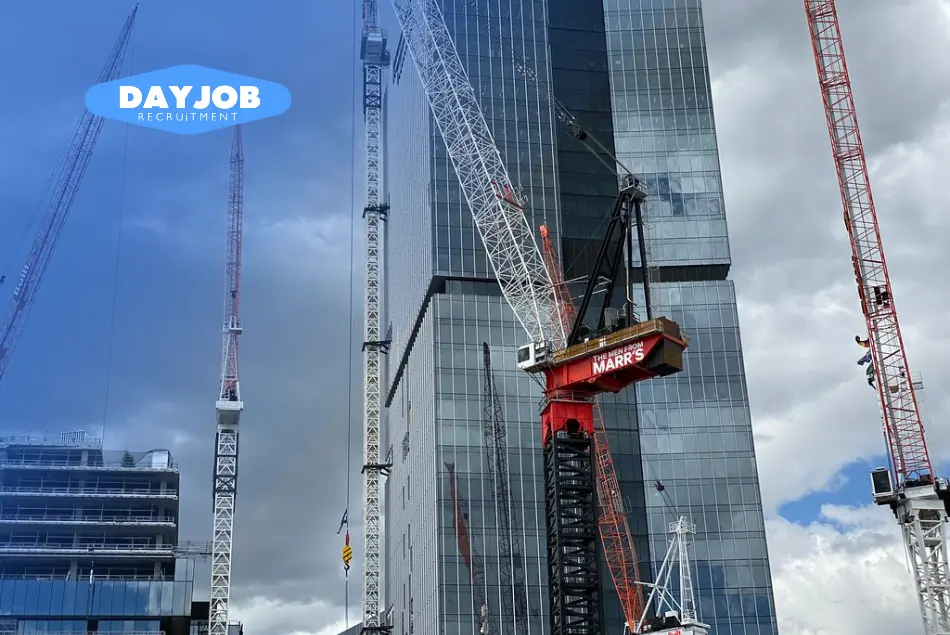The workplace has become increasingly diverse over the years. In today’s society, there is a growing emphasis on embracing multiculturalism in all aspects of life, including in blue-collar jobs. By celebrating diversity in the workplace, employers stand to benefit from the unique perspectives and skills that a multicultural workforce brings.
This blog post looks at the advantages of having a multicultural workforce and how employers can create an environment where everyone feels welcome and valued.
Key Takeaways
- Embracing cultural diversity in blue-collar jobs boosts innovation and creativity by bringing together a wide range of perspectives, experiences, and skills, leading to improved problem-solving and productivity.
- Celebrating diversity and promoting inclusivity in the workplace are essential for creating an environment where all employees feel valued and respected, contributing to higher morale, engagement, and loyalty.
- Initiatives focused on gender equality, empowering underrepresented groups, and fostering a multicultural workforce are vital for reflecting the changing demographics of society and promoting a more equitable industry.
- Effective management of diverse teams requires open communication, cultural sensitivity training, and a supportive environment that values and leverages the unique strengths of each team member, leading to better collaboration and organizational performance.
Significance of Diversity in Blue-Collar Jobs
Diversity in blue-collar jobs has a significant positive impact on productivity and innovation. When people from different backgrounds come together, they bring a wide range of skills, experiences, and perspectives to the table. This diversity fosters creativity and encourages employees to think outside the box, leading to more innovative solutions and approaches in their work.
Moreover, embracing diversity in blue-collar jobs reflects the changing demographics of society. By addressing stereotypes and promoting equal opportunities in the industry, we can build a stronger, culturally diverse workforce.
Cultural Diversity’s Impact on Workforce Dynamics

Cultural diversity plays a crucial role in shaping workforce dynamics within blue-collar jobs. One significant influence is communication and collaboration. A culturally diverse workforce presents both challenges and opportunities in managing cultural diversity. This has been very helpful in key industries such as:
Manufacturing
The manufacturing sector has been a cornerstone of the blue-collar workforce, particularly in the post-WWII era when it experienced significant growth. This sector, which includes the production of consumer goods like cars, appliances, and electronics, has seen a transformation due to technological advancements and globalization.
Construction
This sector is responsible for building roads, bridges, and buildings and has also been significantly influenced by cultural diversity.
Transportation and Logistics
The diversification of the workforce in this sector, which includes trucking and shipping, is crucial for efficiently managing the complex logistics.
Healthcare
Although not traditionally associated with blue-collar work, the healthcare sector has seen an increase in blue-collar roles, such as technicians and support staff.
Service Industries
Service industries catering to suburban residents have seen growth, providing opportunities for a diverse workforce. This diversification can lead to improved customer service and a broader understanding of customer needs.
By embracing cultural diversity in blue-collar jobs, companies can tap into this wealth of knowledge to find innovative solutions.
Key Differences in the Blue-Collar Sector for Empowerment

Promoting Gender Equality in Blue-Collar Industries
In Australia’s traditionally male-dominated blue-collar sectors like mining and construction, breaking gender stereotypes is crucial. Initiatives such as Women in Mining and Resources Western Australia (WIMWA) can provide support. Tailored training and mentorship can help women navigate unique challenges in these industries.
Showcasing Australian female leaders in these sectors, such as through industry awards and media features, can inspire more women to aim for leadership roles. Australian companies need to implement mentorship programs and policies that promote gender equality, ensuring advancement based on merit.
Fostering Aboriginal Participation
Acknowledging and integrating the skills of Aboriginal workers in Australia is vital for industry diversity. Programs like the National Indigenous Australians Agency (NIAA) can aid in targeted recruitment, training, and community partnerships.
Efforts should focus on not just hiring but also on retaining Aboriginal talent, and ensuring they have pathways to leadership roles. This commitment enriches the industry with unique perspectives from different cultures and aligns with Australia’s broader goals of reconciliation and inclusion.
Empowering People with Disabilities
Addressing the needs of workers with disabilities in Australia’s blue-collar jobs means ensuring compliance with the Disability Discrimination Act. Accommodations might include modified workspaces or adaptive technologies in workplaces.
Australian industries should welcome the unique perspectives of workers with disabilities, recognizing their contributions not just for compliance but for the value they add to the workforce. This approach is key to building a truly inclusive society.
Sexual Orientation Diversity for Inclusivity
In Australia, it’s important to create a safe and inclusive environment for LGBTQ+ individuals in blue-collar industries. Adherence to the Sex Discrimination Act and the creation of support networks and resources, such as Pride in Diversity, are crucial steps.
Promoting an inclusive culture where diversity in sexual orientation is embraced contributes to a more collaborative and innovative Australian workforce, reflecting the country’s diverse and progressive society.
Addressing Challenges for Aging Workers
Managing an aging workforce is becoming increasingly important in Australia, as indicated by the growing percentage of workers aged over 65 in regions like Queensland. This calls for age-friendly working regulations. Ergonomic modifications and flexible work schedules that adhere to Safe Work Australia regulations are good initiatives.
Knowledge transfer programs are crucial for leveraging the experience of Australia’s aging workforce, ensuring their invaluable skills and insights are passed down to younger generations. Continuous training and upskilling can also help these workers adapt to evolving industry technologies and trends.
Nurturing Multilingual Communication
In multicultural Australia, embracing linguistic diversity is essential. Language training programs can facilitate better communication and understanding among workers from diverse backgrounds and cultural differences. The Australian Workplace English Language and Literacy (WELL) Programme, implemented by the Department of Industry, Innovation, Science, Research and Tertiary Education, is an example of such an initiative.
Leveraging multilingualism is particularly beneficial in Australia’s globally connected industries like manufacturing and export. It not only improves internal communication but also enhances Australia’s competitive edge in international markets, fostering a workplace culture that reflects the country’s rich cultural tapestry.
Strategies and Initiatives to Enhance Labor Hire

Diversity initiatives are key in attracting diverse talent to blue-collar jobs. Inclusive recruitment practices help companies overcome barriers and promote diversity, bringing multiple benefits to these industries.
Inclusive Recruitment Strategies
Companies can implement recruitment practices that are explicitly designed to attract a diverse range of candidates. This can involve advertising job openings in various languages and through media channels that reach different communities.
It also includes ensuring that job descriptions and requirements do not inadvertently exclude certain groups and that recruitment processes are accessible to people with disabilities.
Bias-Free Hiring Processes
By ensuring a fair and equitable hiring process, companies can introduce measures to minimize bias. This might include structured interviews where every candidate is asked the same set of questions, anonymized application processes where personal details like names and addresses are removed, and diverse hiring panels.
Building an Inclusive Workplace Culture
Beyond the hiring process, it’s important to foster environments that promote workplace diversity where it is not only accepted but valued. This includes ongoing diversity and inclusion training for all staff, establishing employee resource groups for underrepresented employees, and creating channels for open and respectful communication about diversity-related issues.
Promoting Inclusion and Equality in the Workplace
To foster an inclusive work environment, it is essential to ensure equal opportunities for all employees, regardless of their background. Companies should implement policies that prevent discrimination and promote inclusivity at every level. By doing so, they create an atmosphere where everyone feels valued and respected.
Organizing Events and Activities
To promote cultural diversity within the organization as a core value is crucial for promoting inclusion and equality in the workplace. It goes beyond simply acknowledging differences; it involves actively embracing them. Companies can do this by organizing events or activities that highlight various cultures, traditions, and perspectives represented within their workforce. These initiatives encourage employees to learn from one another’s experiences, fostering mutual understanding and respect.
Conclusion
Celebrating diversity in blue-collar jobs is crucial for creating inclusive and thriving work environments. This article has highlighted cultural diversity as important in embracing differences in the workforce and provided insights into various aspects of diversity, including gender representation, age diversity, cultural and linguistic differences, and effective team management.
We at Dayjob Recruitment take pride in connecting great people with diverse companies within the manufacturing and construction industries, focusing on blue-collar, industry-specific tradespeople. We understand the value of diverse skills and experiences, and our recruitment processes are designed to match candidates with roles that suit their unique talents and backgrounds.
If you’re a job seeker looking for new opportunities or an employer seeking top talent, consider Dayjob Recruitment. We ensure that cultural diversity is at the forefront of our recruitment strategy, promoting a multicultural workplace with a blend of different perspectives that contribute to the growth and success of organizations.
Are you a job seeker looking for your next big opportunity? Click below to see how we can assist you in finding the perfect role.
Frequently Asked Questions
How does having a multicultural workforce benefit blue-collar jobs?
Having a multicultural workforce in blue-collar jobs brings diverse perspectives, skills, and experiences to the table. This fosters innovation, problem-solving, and creativity within a culturally diverse team. It also promotes cultural understanding and empathy among employees, leading to better collaboration and productivity.
Why is celebrating diversity important in the workplace?
Celebrating a culturally diverse workplace creates an inclusive environment where individuals feel valued and respected for their unique backgrounds. It boosts employee morale, engagement, and loyalty. Diverse employees and teams are more likely to generate fresh ideas, adapt to change effectively and cater to a wider range of customer needs.
How does gender representation contribute to empowerment in blue-collar jobs?
Gender representation in blue-collar jobs promotes gender equality by breaking stereotypes and providing equal opportunities for both men and women. Empowering women in these roles not only enhances their economic independence but also challenges societal norms while fostering a more balanced work environment.
Is inclusivity important beyond gender diversity?
Yes, inclusivity goes beyond gender diversity. It encompasses embracing individuals from various cultural backgrounds: races, ethnicities, religions, abilities/disabilities, sexual orientations, etc. Inclusive workplaces ensure that everyone feels safe, respected, and valued for who they are. This leads to increased employee satisfaction and improved overall organizational performance.
How can organizations effectively manage diverse teams?
Organizations can manage diverse teams effectively by promoting open communication channels that encourage active listening among team members. Providing cultural sensitivity training helps foster understanding and respect among employees. Creating a supportive environment where different perspectives are valued allows for effective collaboration while leveraging individual strengths.
What does it mean to have diversity in the workplace?
Diversity in the workplace refers to the inclusion of individuals from various backgrounds, encompassing differences in race, gender, age, cultural background, and more. It extends beyond mere representation, focusing on valuing unseen differences such as economic background, education, and neurodiversity, fostering a sense of belonging and making everyone feel part of the team.
How does diversity affect the workplace?
Diversity significantly benefits the workplace by reducing groupthink, increasing creativity and innovation, broadening the range of skills and knowledge, improving decision-making, enhancing problem-solving, expanding market reach, boosting employee engagement and retention, and improving financial performance. It enables organizations to better understand and cater to diverse customer bases, creating a more inclusive environment that reflects the society’s demographics more accurately.
What is the best example of diversity at the workplace?
Examples of diversity in the workplace include cross-functional representation, racial and gender diversity, diversity in socioeconomic status, educational background, and work experience, as well as geographical diversity. These dimensions of diversity ensure a comprehensive range of perspectives, experiences, and skills that contribute to innovation and better decision-making within the organization.
What are the stereotypes of blue-collar workers?
Stereotypes of blue-collar workers often include misconceptions about their skill levels, intelligence, and the value of their contributions to the economy and society. These stereotypes can be harmful, leading to undervaluation of the work performed in these sectors and overlooking the expertise and dedication required in many blue-collar professions. It’s important to challenge and change these perceptions to recognize the critical role blue-collar workers play in various industries and to ensure they are appreciated and compensated fairly for their contributions.
Interested in how we can support your role as an employer? Click below to learn more.








